#rather than only when the emotion module deems it necessary
Explore tagged Tumblr posts
Text
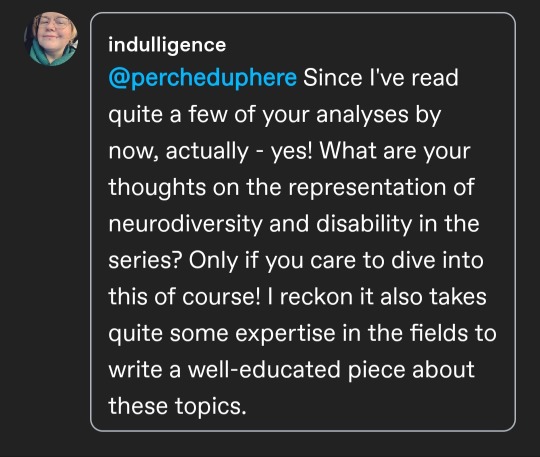
LET'S TALK ABOUT NEURODIVERSE AND DIFFERENTLY-ABLED/PEOPLE WITH DISABILITIES REPRESENTATION IN THE LOKI SERIES
Thank you so much for your patience and your amazing ask, @indulligence! Special thank you, as well, to all the gif artists who made this meta possible.
I've been champing at the bit to get to this one, and I finally made it!
As a disclaimer, I am not a doctor, and I recognize we should take care in pseudo-diagnosing fictional characters as we don't want to perpetuate stereotypes of our neurodiverse and differently abled/people with disabilities communities. Having said that, if interpreting a character as being neurodiverse and/or differently abled/having a disability brings you comfort and joy, you should certainly do so! Canon is a sandbox. Fictional worlds and characters are meant to be engaged with for your pleasure.
I do cite a few medical graphic and their sources below. If any of those sources are problematic in any way, please let me know and I can switch out the graphic for one from a better source.
LOKI - ADHD [?]
At first glance, Loki's characterization in Thor 1, Thor 2, and Ragnarok don't seem to present him as having challenges with executive function. He appears to be able to focus and sustain focus, able to organize, and able to sustain effort and process. Loki also has exceptional memory.
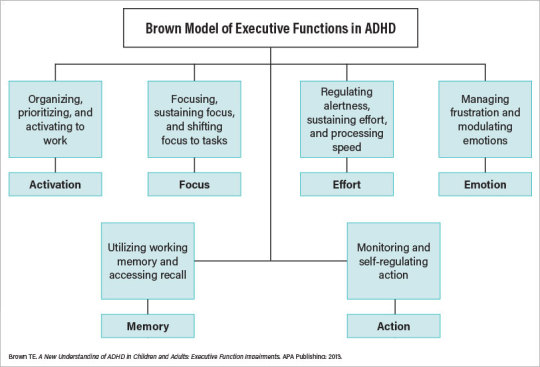
[source]
As for mood, many mood symptoms of ADHD overlap with depression, the latter of which Loki clearly has. Nevertheless, it should be noted that ADHD and depression are often comorbid. He could have both.
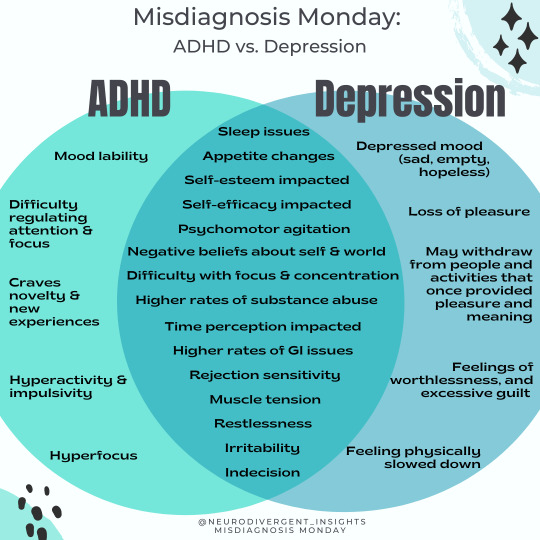
[source]
While memory and effort are not concerns, Loki has consistently shown challenges with impulse control, managing frustration, and modulating emotion. A number of his most consequential choices (i.e. inadvertently directing Malekith to his mother, chasing after Sylvie, etc.) are influenced by his emotional state rather than premeditation. This may suggest that if Loki has ADHD, he leans toward Type 2: Impulsive/Hyperactive:
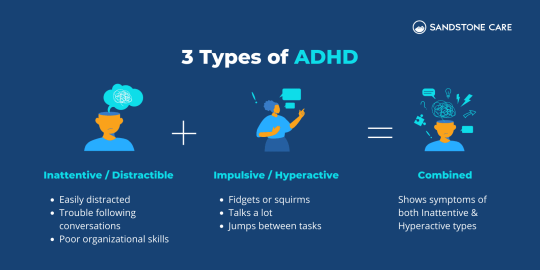
[source]
His characterization in the Loki series changes somewhat to include more hyperactivity and swings between hyperfocus and difficulty regulating attention and focus. Loki gesticulates, fidgets, and moves a lot more in the series than the movies. He also talks much more quickly when excited.

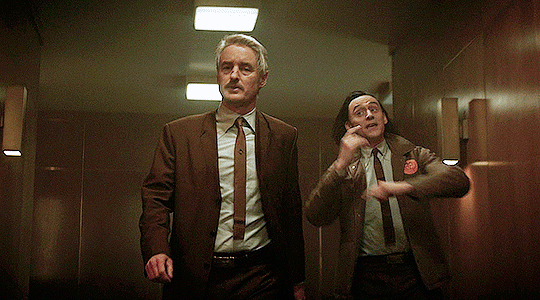
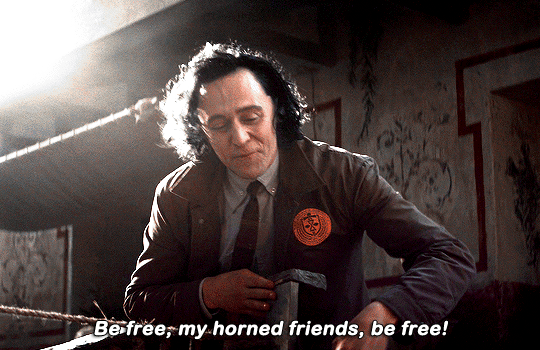
Do I think these changes were intentional? I honestly have no idea. Whatever the case, I think it's lovely that the Loki who becomes the most powerful hero in the MCU is also the version that demonstrates a higher likelihood of being diagnosed with ADHD.
MOBIUS - NEUROTYPICAL / HIGHLY SENSITIVE PERSON (HSP) [?]
I think Mobius, for the most part, is neurotypical. Even with Loki being his special interest/hyperfixation, he doesn't exhibit the other symptom criteria to meet a Level 1 Autism diagnosis, an Obsessive Compulsive Disorder diagnosis, or an Obsessive Compulsive Personality Disorder diagnosis.
He may, however, be a Highly Sensitive Person (HSP).
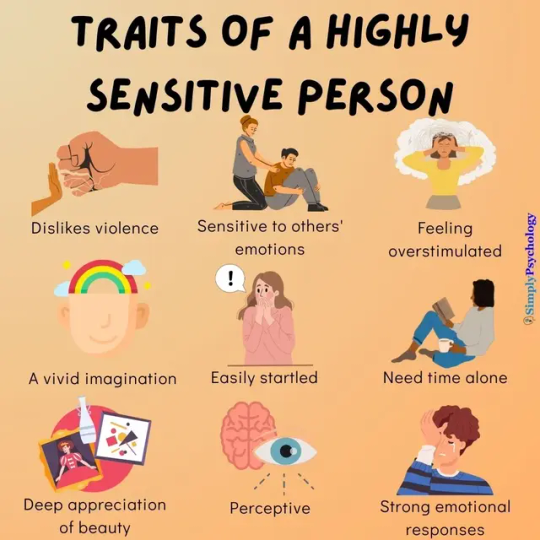
[source]
Mobius's empathy for others, perception of behavior, observation of circumstances, and deep appreciation for beauty (particularly when it comes to the beauty of people) are exceptionally strong.
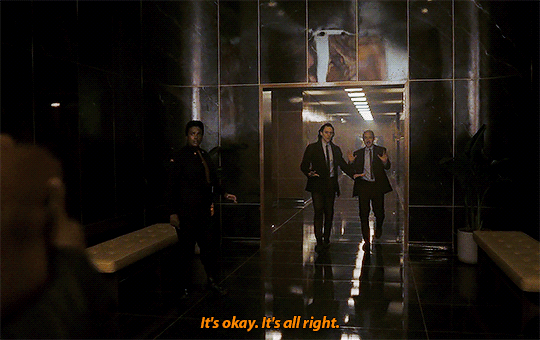
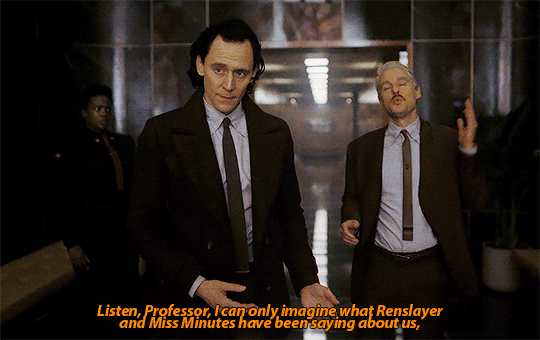

NOTE: Even when the stakes are dire, he's still willing to give Ravonna and Miss Minutes the benefit of the doubt. He really is a sweetie pie. A sweetie pie who can and will slap you if you deserve it.
I think Mobius may mask his strong emotional responses regularly in order to be able function in the TVA. There were only two incidents, when he was unable to suppress his feelings, and those outbursts were remarkable:


That said, Mobius doesn't quite meet the other symptoms of HSP, which include sensitivity to stimuli, being easily startled, and aversion to violence. As we see in the series, Loki's antics don't overwhelm or startle him, and he has no issue with torture when he deems it necessary.
It is possible that Mobius may have Acquired Neurodivergence post-series as a consequence of trauma in the series finale. At present, we have nothing in canon to support this, but many fanfics show Mobius struggling to cope with the loss of Loki, his home, his family, and his identity. This severe level of loss can cause a variety of mental health conditions and disorders that may impact Mobius's future ability to function in a neurotypical way.
SYLVIE - ACQUIRED NEURODIVERGENCE [?]
I've written about Sylvie's sexuality here, and I think some (if not most) of her quirks when it comes social interaction, emotional intimacy, and physical contact may be explained by trauma. As such, I think some of her behavioral symptoms, which can be mistaken as autism, is actually the result of PTSD causing structural changes to her brain. Loki likely has this as well.
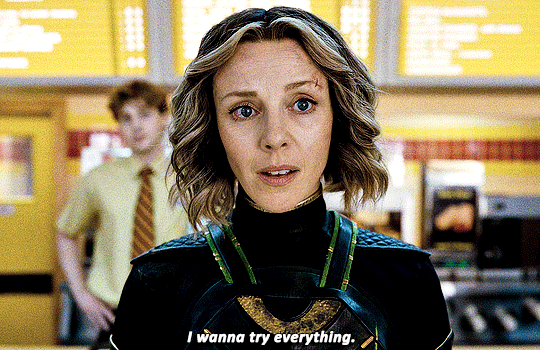
Like O.B., she is verbally blunt and appears to demonstrate lower empathy, especially with those she disagrees with.
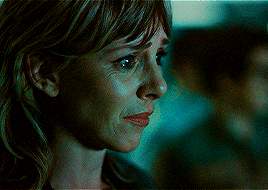
To be clear, this doesn't mean Sylvie doesn't have empathy. She does, as can be seen in the gif above. What I mean is, her empathy and ability to demonstrate it are generally low throughout the series. This is likely a psychological defense mechanism. Having lowered empathy is advantageous if growing up in apocalypses is the only means of survival. Every friend and lover she's ever had is either dead or will die because of those apocalypses or because of who she is to the TVA.
Unlike O.B., Sylvie initiates social interactions and develops friendships more easily. Sylvie has acquaintances, if not friends, in John (McDonalds,) Eric (bartender), and Lyle (record shop). NOTE: You can tell the writer is a man when the bias in creating side characters skews male instead of female. Sylvie should at least have ONE girlfriend in her 1982 timeline, but she doesn't.
OUROBOROS (O.B.) - LEVEL 1 AUTISM [?]
Here he is! Here is our favorite neurodiverse ray of sunshine! Our autistic cinnamon roll! The MVP of season 2!

Now, I have mixed feelings regarding how people on the autism spectrum are portrayed in media. While they are often shown as socially awkward, they are also shown to be exceptionally brilliant in their area(s) of interest. This is quite flattering and often true in real life, yet I worry that this creates a stereotype that not only are all autistic people "geniuses", they are also geniuses in a way that is useful to a capitalistic society. That expectation isn't healthy and perpetuates the belief that a person is only valuable if they are useful. Further, it is a narrow portrayal of the autism spectrum. It is important to have representation across that spectrum instead of stopping at Level 1.
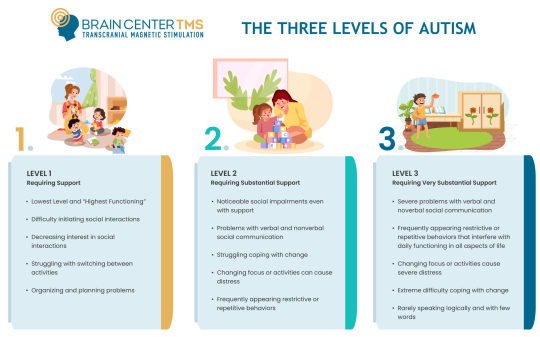
But I don't like being a Debbie Downer, so let's focus on the good representation that can be found in O.B.!
O.B., in a lot of ways, reminds me of Entrapta from She-Ra and the Princesses of Power. He doesn't always read social cues correctly, which often plays out as fantastic comedy relief on screen when the stakes are outrageous.
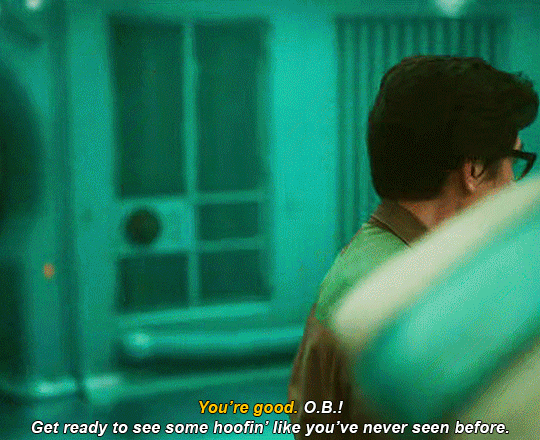
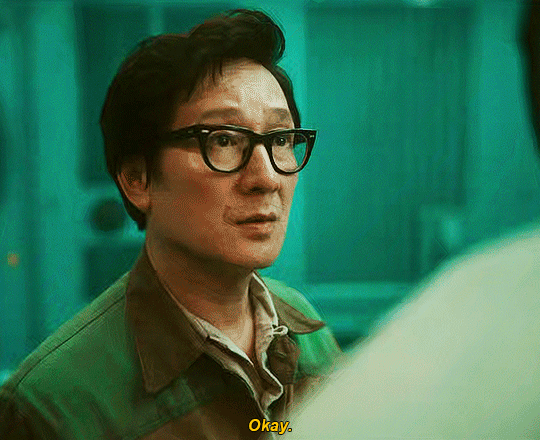
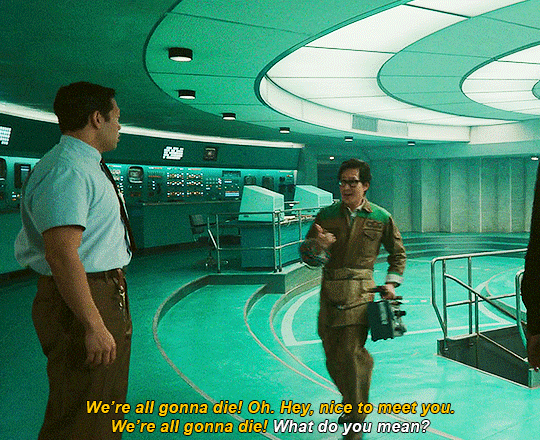
Like Entrapta, his science and engineering aptitude are nearly unmatched if not for Victor Timely. However, the hyperfocus O.B. exhibits does have negative consequences, as exemplified when he explains he lost his job and wife due to dedication in creating a TemPad prototype. Despite these losses, O.B. is resilient and looks forward to what comes next (another possible symptom of his neurodiversity).

I love that O.B.'s neurodiversity allows him to believe Loki when Loki finds him on his branched timeline with his "crazy story". It is also what allows him to see the patterns in Loki's timeslipping and propose, with confidence, that timeslipping can be controlled.
He is also a very good friend. Though he might not be the "huggy" type, he always makes an effort to find concrete solutions to big problems. I would say that O.B. is Loki's second closest friend in the series after Mobius.
I can't tell if it's O.B.'s autism or O.B.'s inner asshole that's fucking around with Loki in this scene. Not once but twice! Either way, I love it (and the fact that Loki resists the temptation to zap him back).

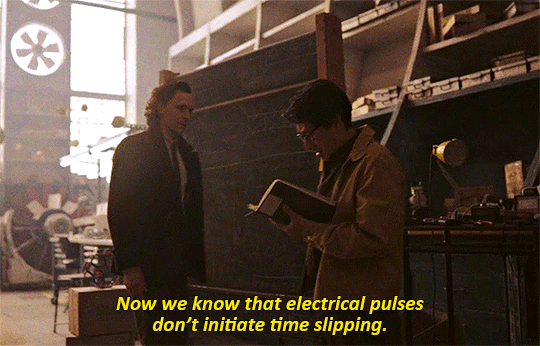
CASEY - LEVEL 1 AUTISIM [?]
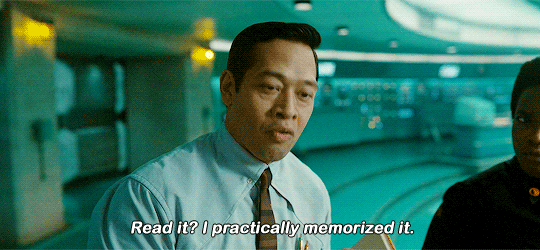
What I appreciate about Casey is that if he is interpreted as autistic, he is not a super genius. He is still quite gifted, but I think he represents where a good number of level 1 autistics actually land in life. I feel this is a much healthier portrayal and balances out O.B.'s genius representation nicely.
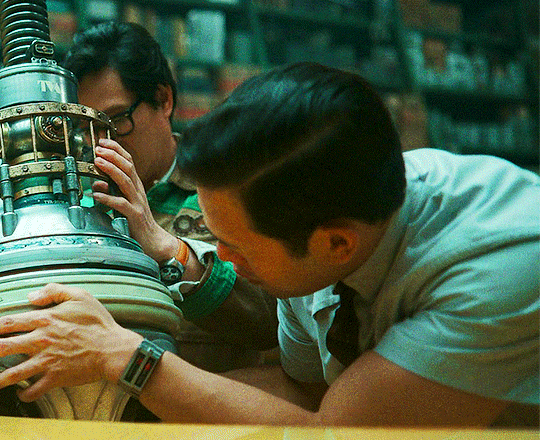
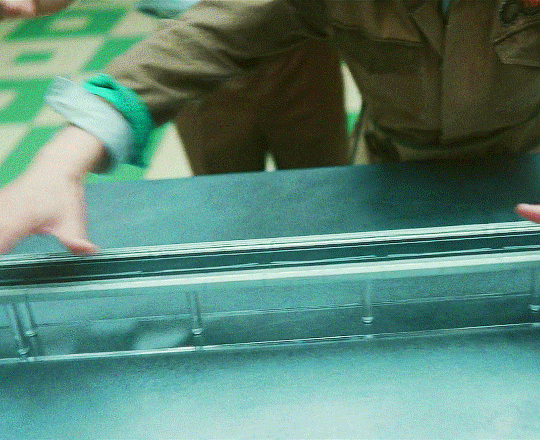
NOTE: Look how cute they are! They must be protected at all costs.
I am also so happy that Casey and O.B. found friendship in each other. We have to give B-15 (Verity) credit for this. The only reason they met at all is because B-15 had the presence of mind to think of Casey to help O.B. with the Loom debacle.

Together, they become unstoppable, but there's one more friend who completes the Science Club Trio ...
VICTOR TIMELY - SPEECH IMPEDIMENT/LEVEL 1 AUTISM [?]
Since I've discussed autism interpretation and representation at length with O.B. and Casey, I'm going to concentrate on the portrayal of Victor Timely's speech impediment.

I also have mixed feelings regarding the media portrayal of people with speech impediments. This medical condition is often used as a means of showing a character is "meek" or "harmless". I don't doubt that this character feature was chosen for that exact purpose, to immediately contrast Timely against HWR in the quickest, most efficient way possible. Unfortunately, this kind of narrative "shortcut" leads to stereotyping people with speech impediments accordingly.
It's a good thing, then, that Loki series takes the time to add some depth to Timely's character. Yes, he has a speech impediment, but he is also very willful, crafty, and brave.
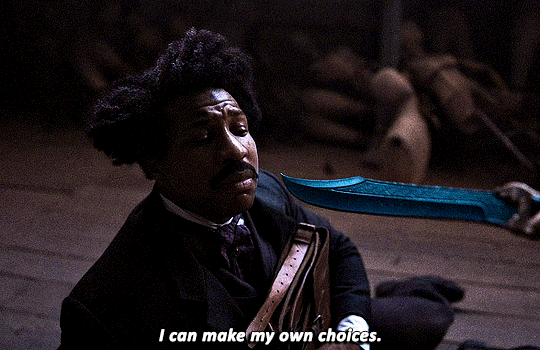
#loki#mobius#lokius#loki series#loki season 2#loki meta#my meta#sylvie#ouroboros#ob#casey#victory timely#hwr#neurodiversity#neurodiverse#neurodiverse representation#speech impediment#loki analysis#my analysis
46 notes
·
View notes
Note
Hello?I...I must confess I don't know how this whole 'letter' thing works. I can only hope that I am doing this currently.
My aim when writing this is to express my love for you. I may be a combat android but I thanks to you I know, with a certaintinty of a 100% that I can feel.
I wanted to thank you for everything you have done for me, for everything you have taught me. I promise to stand by you, no matter the obstacles. You need not to worry, any threats to your safety will be dealt with.
After all, sadness would take over me if anything were to happen to you, love.
Was this 'letter' to your liking and written correctly? I am of course open to suggestions on how to improve.
~🤖KOS-MOS🤖
Oh, hey, speaking of this selfship- (in reference to one of the asks I answered earlier)
I wasn’t really expecting anything for the letters to self-inserts event, but anon, thank you so much for this!! It is a really lovely letter and I could definitely envision KOS-MOS doing something like this which made it feel really nice ^-^
Thank you again for this, anon - it means a lot that you went to the trouble of sending this in!!~
#a call from the void#selfship#selfshipping#love: power of another world (KOS‑MOS)#selfship: encoded emotions (KOS‑MOS/calanthe)#out of the inbox#selfship asks#anon#letters from F/Os#sapphicseptember2021#sorry if my response was a bit short but this really was appreciated#the bit about ''thanks to you ... I know I can feel'' really hits home because of how my self-insert modifies KOS-MOS' emotion module#which doesn't change anything about how she expresses emotions but it lets her express them whenever she wants to#rather than only when the emotion module deems it necessary#so.. that line in particular really made me smile so thank you ^-^
6 notes
·
View notes
Text
One of the things I think about and get frustrated about with respect to thinking about real mooshy biological brains is actually that neuroscientists are far too enthusiastic about comparing brains to computers, because computers are a similarly wonderfully complex thinking machine but also they're a bit more straightforward and less flexible than brains are. MB being a construct complicates all of that, and I have some thoughts about its likely anatomical design from that perspective--in some ways, it's more futuristic a concept than a purely machine intelligence like ART. The fact that it seems to have a largely human head and face is suggestive that its "neural tissue" almost certainly includes most or all of a functional human brain, albeit one that interfaces nearly seamlessly from very early development with a paired computational architecture.
(It's a really interesting thought to consider SecUnit creches as their own thing, because human brains develop as a function of experience with the world around them: are SecUnits hooked into the feed from first release? how can you bypass the necessary contextual training of development by which infants and children learn walking and running and emotional regulation and let the neurons teach each other how to connect properly to achieve the behaviors that are most adaptive to the little squishy larvae when they first emerge.
anyway, I went on to have a bunch of thoughts.
The company being a cheapass, the odds are faaaairly good that as much of Murderbot's "childhood" and development were simulated as possible to save on the need for skilled supervisory botling nannies while the brains are developing. if you can basically automate development virtually by manipulating the sensory inputs to take in pre-programmed simulator modules rather than having to pay live human supervisors, you can save a lot in costs and also probably accelerate much of the process.
I say accelerate the process because most of the peripheral nervous system seems to be mechanical, meaning you don't need to spend as much time tuning the motor development of the unit and actually letting the new constructlings toddle around to develop their dexterity--you can use basically pre-installed motor reflexes that have largely developed during infancy that just need a little tuning and practice when you let ‘em loose, which is how much more precocial species do it. Only since the periphery doesn’t need so much variation and is easier to duplicate, and you’ve pre-loaded all the physical skills you need, maybe you don’t need to spend too much time training the physical skillsets of the murderbots by actually giving them a ton of experience physically moving around in the real world prior to activation. you definitely do have to spend at least a couple days letting the constructs get everything in working order during the course of development but we’re talking a timespan of weeks rather than 15yrs, which is a definite return on investment here.)
also where the fuck are they generating the sugars necessary to sustain that brain meat tissue, there are too many biochemical processes going on there for purely electric recharging to supply all the necessary inputs without digestion. where is the nutrient port for raw materials. why the fuck were lungs deemed more necessary than stomachs here, and how the fuck are the neurotransmitters and proteins and shit being generated and replenished in the jar o murderbot we’re talking here?
but the thing is. the thing is. because secUnits and comfortUnits run on brains, and brains are bizarre and wonderful but they take time to develop, a lot of the expense of production of these constructs probably comes from the time it takes to develop a brain capable of successfully interfacing with this level of tech industry AND spit out a level of social acuity such that constructs can navigate complex human social dynamics without routinely flipping out and losing their shit everywhere. learning is a whole process and you’re learning literally every moment you are doing things, so how and where are baby constructs learning about social dynamics? THAT one has to be one of the tricky ones. also, how fast can you coax these tissue developments along without fucking it up, anyway?
oh also why the fuck are they using cloned tissue from a wide range of individual donors, it would be easier to use only a few donors with identical faces if they’re generating the blastocysts from scratch--ohhh I wonder. I wonder if they’re picking up existing unwanted frozen embryos or pre-existing tissue banks here, not so much cloning tissue as repurposing unwanted genetic material to develop the construct as it moves along
idk man, brains are great
#murderbot#the murderbot diaries#I'm spending way too much time thinking about decisionmaking and learning strategies right now#and it's showing in the way I approach large datasets#but also: the fridge horror of the warehouse where the babySecUnits and babyComfortUnits are developing#how can you build a person#SURPRISE growing up is part of the construction process#we can't bypass development completely and still get a functional brain out at the end
90 notes
·
View notes
Video
youtube
This is my end of first year submission for the LAUVC402 Self Negotiated Brief. Straying rather majorly from my initial research, I believe it still has underlying links to it. To bring more clarity to it, I have included below my Design Rationale.
understood
past of understand
Foremost, language is our tool to comprehend not only the world around us and each other but maybe in some ways ourselves. Language has forever been part of my life, molded and intertwined with my very being. Time has revealed this to me through much questioning and self reflection. To me, it serves as more than just a basic tool, it helps me connect with others whilst simultaneously differentiating me, expands my knowledge; it represents a time in place, emotions, people, culture. Awe. I am constantly curious. However, I find myself lost in such abundance in a way that may becloud my perspective, rendering it less comprehensible. I have found many ways to express myself yet language is the one where I can’t quite paint the right picture.
That is why, through this project I intend to strip all the aforementioned from the audience and perhaps put them in my shoes. I aim to leave them perplexed, with a multitude of questions in a sense of confusion, wondering if they have been mislead and abandoned into nonsense. Due to the universality of language amongst us, the audience in question is everyone and anyone; present, future and even past (based off Einstein’s demonstrated that all time exists all the time).
I leave myself unconstrained as to the form that this project will present itself in as I believe this will very much be influenced by experimentation. But also in part from the criticism that I have received vis-à-vis my need to control the details of everything. This is something that has often been pointed out to me and that I have been trying to navigate for some time, as my mind deems it necessary to find order in chaos; connect the dots and construct a narrative. That is why I will be pushing myself to document this process. I am likewise resolute to pursue a more analogue method. Whilst digital will inevitably be used as a tool, I have such satisfaction and freedom when working directly with my hands. I do nonetheless envisage that moving image will lend itself fittingly in this setting.
Through observation and feedback during my previous projects, I have found it very hard to push myself to my full potential without the interaction with others. My motivation and dedication to a project wither when I am not in an inspiring and creative setting in which the analysis, critique and feedback from peers and tutors is vital. As such, during this project I will strive to not only create this atmosphere but possibly also collaborate directly with other communicators.
I have chosen to undertake a more personal project in this module as for me this is the time where I have liberty unlike that which I might have in industry and as such should take advantage of this opportunity to explore myself and my surroundings in-depth.
In this module, I really tried to push myself to respond to the feedback I was given after LAUVC401. I however do still struggle with some points. Much to your dismay I bet, I have established that I can’t afford to justify my action on every turn but rather need to to let the process flow organically. I find it hinders my work for me to stop and document what I’m doing and why. I have now reached the point where I have constructed my own work ethic, so I am here to progress as a designer, not to fill my sketchbook. For me to create playfully I have to be in the right mindset since my head never stops thinking, validating, visualising and refining ideas before I’ve even started making them and often working under a brief does not allow for that as I will always be trying to link what I am doing back to the project.
Having its roots in my curiosity of language, this project has evolved and shaped itself in a way that I had not foreseen. Mainly due to me absorbing not only a vast amount of raw information but also thanks to the input and help from peers.
For the longest part of this project I was simply learning and immersing myself in the topic. I find this to be the way that I can justify to myself producing something as I feel the need to know a minimum on a subject before being able to reflect on it and then subsequently create a response to that. I wished also to get the perspective of others involved. To attain this I undertook some small surveys as well as a couple of one to one interviews with my friends and fellow artists/designers.
Influenced by the works of Chris Marker, John Skoog, Jacques Tati and Nicolas Provost, I knew I had a particular style and mood to what I wanted the video to resemble. I wanted to capture that grainy atmosphere that only film can bring but did not really have access to a camera of that caliber. So I wanted to continue my analogue streak and shot with a 35mm film camera, animating the films in post.
My final intention for this project was to take the audience on a journey, possibly through my subconscious. I used video as this medium allows for many senses to be in use at once as well as being now readily available in everyday life. Since I did not have the intention of a clear target audience, my hunch is it would appeal to a certain type of viewer, those more curious and daring to not only discover it but who then interpret for themselves what is going on. I aimed to create something that was just coherent enough for them be led along. Yet I didn’t want them to be held by the hand. Rather in response to my original brief, there is no implicit narrative: the viewer is pushed to forge their own story, depending completely on their point of view.
1 note
·
View note
Text
Charon’s Garden of Judgement: Discussion and Review
Given the religious references and numerous insinuations, such as mentions of heaven and hell, the absolution of sins, gardens, judgement, the name Lilith, forgotten memories of past sins, Blanco’s recollection of escaping, the spreading sterility of the garden’s flowers, and the prevalence of light and dark imagery, the narrative overall does appear to be suggesting a purgatory scenario where sins in life are potentially expiated before transference to either Heaven or Hell.
Admittedly, the straightforwardness and tragic realism of Sima’s self-denigrating mentality and traumatic experiences were rather difficult for me to witness. The grounded, brutally uncompromising lens through which her characterization and tribulations were presented seemed, from my personal perspective, to be quite accurate in its portrayal of a mind encumbered with insuperable loneliness, feelings of worthlessness, and pernicious desperation. I understand the propensity as a creative person to seek external sources of affirmation, whereby the reception of your work is the fulcrum on which your happiness and self-esteem are precariously balanced. In general, I consider the pace and structure of Sima’s arc to be rather effective in the intricate, gradual establishment of her character and the dismal context which predicated her apparent “sin”.
Paralleling the seemingly inevitable wilting and sterility of the flowers representing Heaven, efforts towards cultivating this limbo into a replication of Paradise will perhaps always be impotent. The suppression of corrosive, debilitating memories creates an environment of peaceful dissonance, yet, this state appears unsustainable and fragile, given Sima’s sudden, violent reaction to Blanco’s comments and the painful reemergence of her past. With respect to residual queries and oddities in the plot, it’s a bit interesting to me that Sima’s awareness of her past contraventions and acceptance of her fate were deemed inevitable eventualities incurred from her choices alone and supposedly independent of Blanco’s influence. However, if the first bad ending implies that Blanco’s forgiveness can ensure the perpetuation of this delicate peace, so long as he carefully avoids any slight provocation and refuses to delve further into his companions’ pasts as advised, then it almost seems as though Sima’s disappearance was directly instigated by Blanco’s actions and judgement. Blanco himself questions why his presence was apparently so interruptive to the relatively pleasant and agreeable daily structure the women had imposed upon themselves. Additionally, Vanilla professes that sins committed in the garden will be absolved and any behavior, regardless of its brutality, is acceptable, and yet, Sima’s murderous intentions against Blanco immediately result in her transcending the interminable cycles of purgatory and attaining some permanent state. Whether this change can be considered redemptive and liberating due to her self-awareness and self-forgiveness or, conversely, interpreted as condemnation and personalized punishment in the form of fading into obscurity and utter worthlessness, I can’t exactly say.
Concerning Lilith’s characterization, I would consider her prioritization of obtaining purely sexual gratification, without the need for exclusivity or a more profound emotional and intellectual connection with her partner, to be a rather common inclination, especially for her age. Though she certainly should have discussed her intentions beforehand with each man to ensure the individual expectations for their nascent relationship are unified, her lasciviousness and masturbatory behaviors are not particularly demonstrative of moral depravity from a modern perspective. Lust has been categorized and condemned as sinful historically, especially in the expression of female sexuality and pleasure, however, it seems the flaws and grief that Lilith must accept in this purgatory are not her sexual profligacy and callousness, but rather the tormented mentality that these proclivities had manifested from. Essentially, it seems Lilith adopted this external austerity and suppressed her vulnerability as a protective mechanism to prevent the potential pain of injudiciously appropriating her care and affections. Distance, aloofness, and indifference seem safer to maintain and rely on than dedicated investment in people or pursuits that may fail and, consequently, prove emotionally destructive, which Lilith seems to admit before she is purged of her color and transcends her current state.
Therefore, perhaps this garden is intended to elicit retrospection and showcase the complex interiority of its residents’ minds and personalities, instead of offering forgiveness and absolution from some single, definitive “sin”. For instance, Lilith is not necessarily repentant for her sexual desires specifically, rather, she apologizes to Sima for her tendency to deride those with profound, vested interests and cares. Lilith attains a sort of enlightenment, whereby the mentalities and perspectives that she once excoriated suddenly become explicable and worthwhile, while the faults of her own mind are elucidated for her to recognize and accept. True forgiveness appears to be unobtainable, as their judgement might have been ordained prior to residence within the garden, however, illumination and self-awareness are still possible, even if they happen to come too late.
While forgiveness and self-awareness are evidently of paramount significance to the narrative and its underlying themes, I suppose it can be argued, in consideration of the rather grim and depressing situation which precipitated Soyo’s suicide, that the concept personal fulfillment is also quite prevalent in each woman’s backstory. Evaluated from this perspective, Sima, Lilith, and Soyo all seem to be encumbered with profound feelings of emptiness and desperation, born from the persistent deprivation of internal confidence and self-worth. The emotional suffering experienced by these women and their injurious attempts to redress this pain are intimately explored through their relationships with the men that preyed on these weaknesses and, directly or indirectly, caused their deaths. As I expatiated upon earlier on, Sima is wracked with self-castigating tendencies and the insuppressible need for external affirmation, which renders her susceptible to the predation of an obsessive man who appeared to offer her the confirmatory assurances she so coveted. Lilith, despite desiring the fulfillment derived from the true acceptance and understanding of another, relies on the transient enjoyment of shallow sexual encounters and relationships to satiate her physical needs while avoiding the potential pain of emotional investment. Her wanton disregard for her partners’ expectations and feelings eventually subjected her to the wrath of a vengeful, unhinged lover. Soyo is categorically denied, for quite the extended period of time, the respect and affection that she craves from her husband, which allows her to be easily manipulated and entirely dependent on a man who was attentive to her sexual needs, but never truly loved her. Soyo’s conceptualization of personal happiness entailed devoting herself towards rearing a child in a loving, sexual, and mutually satisfying relationship, yet, she succumbs to the persuasive promises of ignominious physical gratification. To build upon an earlier analysis of mine, the requirements of transcendence from this perpetual limbo appear to be the realization of the insalubrious and ultimately destructive means through which they each sought reprieve from the flawed, damaging perceptions of their own potential and worth.
Additionally, it's of interest to me how relations with dangerous men predicated the downfall of these women, which somewhat parallels their experiences in limbo whereby only through interactions with a potentially violent man can they instigate the adoption of self-awareness and the ability to finally “move on”.
With respect to the direction of the ending, I appreciate its avoidance of incorporating some bizarre twist or granting validity to the seeming insinuations of a murderous, sanguinary past for Blanco. I had wondered at the beginning if there existed a prior romantic connection between Blanco and Vanilla, and the confirmation of this profoundly loving relationship shown through their brief reunion was beautifully composed and rather touching. Concerning the exceptionally dark subject matter and themes explored throughout the narrative, there was indubitable variability in the quality, accuracy, and tact of their presentation. Respect and intimate knowledge of the topics to be expounded upon are always of paramount importance when intending to examine and depict, with brutal, explicit, and uncompromising honesty, real-life tribulations of disturbingly grave and harrowing natures. This care is especially necessary given the format of this visual novel, whereby the corrosive, destructive thoughts and traumatic situations are represented through the intricately detailed first-hand experiences of these tortured women. From my personal perspective, certain scenes were effective, through their harsh realism, in eliciting resonance with the complex mentalities and circumstances these women endured, for instance, Sima’s pernicious means of deriving her self-worth. Conversely, Charon’s lingering propensity for relying on sudden violence or other shocking outcomes seems to result in the interruption of the grim, heavy atmosphere with somewhat absurd, out-of-place flippancy or unfounded brutality. I suppose it can therefore be argued that this visual novel could have benefited from the proper modulation and establishment of tonal consistency throughout the arc of its narrative to avoid the issue of these occasional, yet arguably a tad disrespectful, incongruities in both tone and character writing. Overall, I enjoyed many elements of the story as well as the simplicity and straightforwardness in the structure of its plot.
Concerning the symbolism and themes that I’m capable of discerning through the lens of my personal perspective and experiences, I suppose it’s worth reiterating the prevalence of sexual violence and abuse Sima, Lilith, Soyo, and Vanilla were each subjected to at the hands of specific men in their lives, as well as the connection between these dangerous men and the reasons for their residence in purgatory. In relation to this thread of commonality between them, it may be somewhat possible to infer why legitimate intimacy and trust in a man like Blanco, in conjunction with his subsequent actions, judgement, or direct punishment, were supposedly responsible for allowing atonement of their past mistakes, inducing self-awareness and absolution, and finally granting transcendence from this perpetual limbo. Generally, I can’t really see another definitive, intended reason why Blanco’s interactions with these three women were so immediately disruptive and significant to them in their journeys through the afterlife. Additionally, Blanco’s vicious attack on Soyo and his belief in the righteousness of his ability to judge and punish her are still a bit questionable to me, as it seems these feelings were a contrivance intended to cause a momentous end to Soyo’s route, yet, were never shown to have any lasting repercussions for Blanco and his mental state or given further explication as to their source.
In general, I consider this game an improvement in some aspects over Cradle of Ruin.
0 notes
Text
finding more names you like to use is tricky, isn’t it
#a call from the void#I made this post because i'm trying to come up with a self-insert for selfshipping with KOS-MOS but I can't find any names I like#I like using lots of different names for all my self-inserts but i'm kinda running out of names that actually feel like me#I do at least have the basic concept for her down - she's the scientist in charge of coding KOS-MOS' emotion module#and she changed it beyond what was intended so that KOS-MOS could show emotions as often as she wanted to#rather than only when her emotion module would have ordinarily deemed it necessary#but something happens with the zohar and accidentally pulls both her and KOS-MOS out of xenosaga and into alrest/XC2#but regardless this post is more than okay to reblog - it's vague enough that it can apply to a lot of situations haha
6 notes
·
View notes
Text
I think I might finally have a name I really like for the self-insert I use to selfship with KOS-MOS - namely, Calanthe!
It is yet another flower name (hence the -anthe- stem, like in Telanthera), and I know Xenoblade establishes that the girls named after flowers are the robots - Poppi, Lila, Rosa, ..there’s another technically but that’s spoilers - but Xenosaga as a series seems to use flower names for most of its female characters in general - KOS-MOS being cosmos of course, but then Shion being the Tatarian aster, Juli whose name is pronounced in Japanese as yuri meaning lily, maybe MOMO being named after peach blossom and based on a character called Sakura which is cherry blossom, and so on? So, given that my self-insert originates from the world of Xenosaga, and Calanthe is a genus of orchids, it could still fit!
Regardless of name, she starts out as a promising young scientist working in Vector Industries’ First R&D Division, specifically as part of the programming team responsible for coding KOS-MOS’ artificial intelligence. Only, while she is in the process of fitting a modification to KOS-MOS’ operating system to allow her to emit expressions whenever she wishes (rather than only when her emotion module deems it necessary), and attempts to begin testing the results of her new code, something happens with.. probably the Zohar and/or the Conduit, I haven’t figured out the specifics yet, and ends up transporting both KOS-MOS and Calanthe into the world of Alrest, unexpectedly converting KOS-MOS into a light-element Ether Cannon Blade and Calanthe into her extremely confused Driver. Yes, we’re going to travel around with the main XC2 party, but no, I haven’t figured out anything about how yet.
At the moment, assuming I stick with the name, my tag for her is going to be “self-insert: in a world displaced (calanthe)”, which means I finally have all three tags set for my selfship with KOS-MOS! Thank you to anyone and everyone who’s happened to read all of this rambling, and please take a tiny pixelart KOS-MOS I found on the Xenosaga Wiki for your troubles~
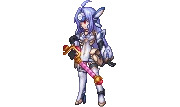
#a call from the void#selfship#selfshipping#love: power of another world (KOS‑MOS)#selfship: encoded emotions (KOS‑MOS/calanthe)#self‑inserts#self‑insert: in a world displaced (calanthe)#I don't have any visual reference but she is definitely going to look pretty nerdy#also bringing her into XC2 means she's going to interact with sapphire and there is a *lot* of fun to be had there#I love getting multiple self-inserts in the same place since then it's like different sides of me all interacting at once haha#ask to tag#science~#I've added her to the main void-kissed carrd but not to the void-kissed-characters carrd yet. that will happen tomorrow
9 notes
·
View notes